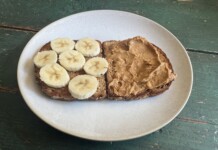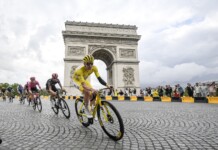It’s that time of year in Utah, when summer starts to take its toll. Day after day of high temperature, dry air, and desert winds can all affect our nutrition, and therefore our cycling performance. More specifically, the weather and season directly impact our hydration status on and off the bike. Each year we publish an article on hydration for the hot summer months. With reference to some important points from other articles, this one will focus athlete hydration needs, and help you determine what to put in your bottles every time you go out for a ride or race.
Adequate hydration is important to both the athlete’s health and performance. The word adequate is chosen here because we want to have the proper amount of water and electrolytes to keep our muscles functioning and to replenish what we lose during exercise. Our body’s mechanism to regulate internal temperature is called thermoregulation. When we exercise, we dissipate heat energy by producing sweat. As sweat evaporates off the skin, it cools us down. So, the hotter it is outside and the harder we workout, the more sweat we produce. Dehydration can cause muscle cramps, premature fatigue, increased recovery time, increased blood pressure and cardiovascular stress, and raises the risk of heat illness such as heat exhaustion and the more dangerous heat stroke. On the other hand, you can over-hydrate/under-electrolyte, also known as hyponatremia. This means that your liquids need more sodium and potassium, which are used for muscle contraction. It’s basically a different form of “bonking.” When severe, it can lead to convulsions, pulmonary edema, respiratory failure, and cardiac arrest. Thus, it is important as athletes that we know exactly when, what, and how much to drink during exercise so that we get adequate hydration and our muscles can work to their full potential, utilize the fluids, and not cramp or turn into the consistency of beef jerky!
Dehydration that exceeds 2 percent body weight loss harms exercise performance, so athletes are advised to begin exercise well hydrated, minimize dehydration during exercise, and replace fluid losses after training and competition. Not only do we need to replenish lost fluid and electrolytes, but carbohydrates as well. For all of these reasons, we need sport drinks. As stated in our previous nutrition articles, supplements are designed to get us what we need beyond general nutrition because of the extra demands of training and competition. So, we must supplement our water with electrolytes and calories (carbohydrates) in order to stay on top of our performance on the bike.
The standard protocol for hydration and supplementation is as follows: for short rides ( 45 minutes, especially in heat) and endurance training (>90 minutes) definitely require hydration supplements. At those intensities and long durations, focus on 2 bottles/hour, at least one of those having electrolyte and carbohydrate mix. Sports drinks may also be used post exercise, as they provide several of the key nutrients needed for recovery (i.e., fluid, carbohydrate and electrolytes). So don’t be shy to mix your recovery protein right in with a your electrolytes to accelerate your recovery and continue to replenish what was lost via sweat during the workout.
There are so many products on the market, it is difficult to decide which to use.
Osmo, ScratchLabs, 1st Endurance, Gatorade, Carborocket, Heed, etc. On top of the plethora of options and flavors out there, everyone has different opinions, experiences, stories good and bad, etc. about which mix works for them. It all gets so confusing, especially when the media and marketing around products changes all the time. What is important is to determine YOUR specific hydration needs and find the product that works for YOU. Not only by the numbers (calories, electrolytes, sugars, etc.) but the flavors, tastes, and tolerance levels. It is very important that you enjoy what you are drinking as it is helping you get exactly what you need for optimal performance. Stay tuned for the next article on sport drinks, which will break down each product, analyze the nutrition labels of each, and help your truly determine your needs.
All of this talk may have you thinking, “How do I know if I’m properly hydrated?” The simple answer is not so pleasant to say, but the color of your urine is an overall indicator of hydration status. A light to clear color (like lemonade) urine is a sign of appropriate hydration. Dark colored urine (more like apple juice), indicates dehydration. This is not to be confused with dark or orange looking urine, which is often produced soon after consuming vitamin supplements. And if your urine is lighter than lemonade, closer to clear, it would be a good idea to drink a bottle electrolyte mix, even if you’re not exercising. That can help your body maintain the water you consume, rather than pee it all out. Also, if you’re not going to the potty every couple hours, you are definitely not hydrated, so get on the water right away! The main thing to note here is that you can adjust your hydration within 30 minutes. So, simply drinking a bottle of water and/or electrolytes can bring things back to normal.
Hydration Tips for the Road
- Always pay attention to thirst signals and drink when thirsty, on or off the bike
- Drink more when adapting to a new environment (i.e., humidity, wind, and altitude changes)
- Start hydrating at least 4 hours before a ride or race
- During recovery, aim to replenish 150% of lost fluids: for every 1 lb (½ kg) lost, replace with ~3 cups (~0.75 L) water and be sure to include some sodium-rich foods and/or fluids to aid in fluid retention.
- Practice, practice, practice! Use training rides to experiment with different drinks, powders, electrolyte tablets, etc. Figuring out what works best for you will boost confidence on the day of an event and help you achieve your potential and optimize your cycling performance.
Breanne Nalder, MS, RDN has a Master’s degree in nutrition with an emphasis in sports dietetics at the University of Utah. She is a Registered Dietitian, the nutrition coach at PLAN7 Endurance Coaching, and races for DNA Cycling p/b K4 Racing as a category 1 road cyclist. For personal nutrition coaching, you can reach Breanne at 801-550-0434 or [email protected].











